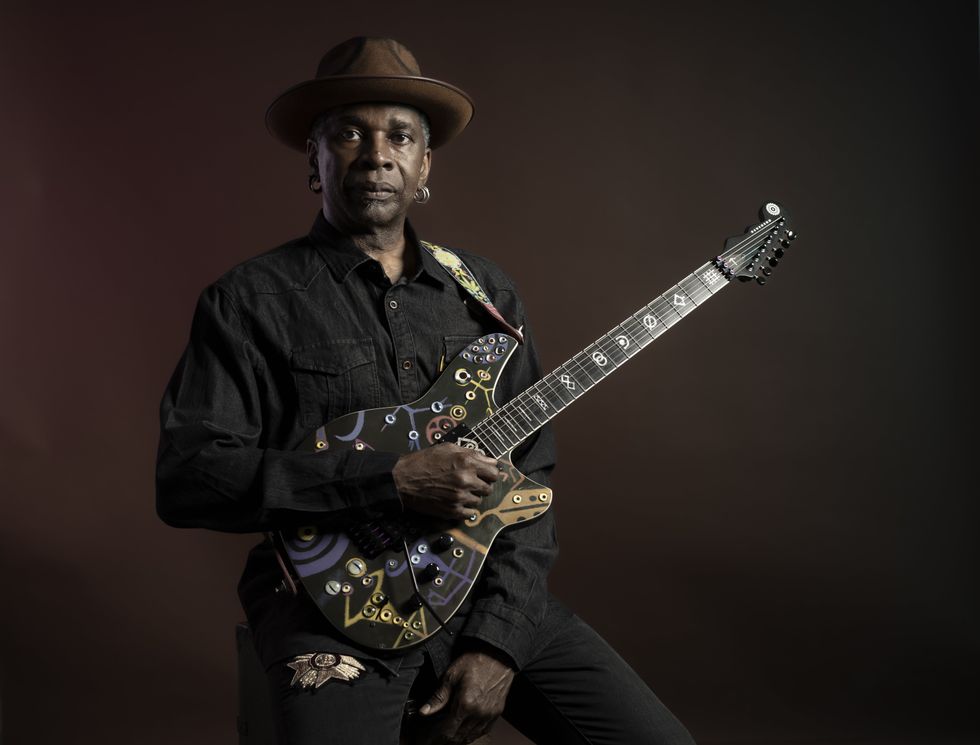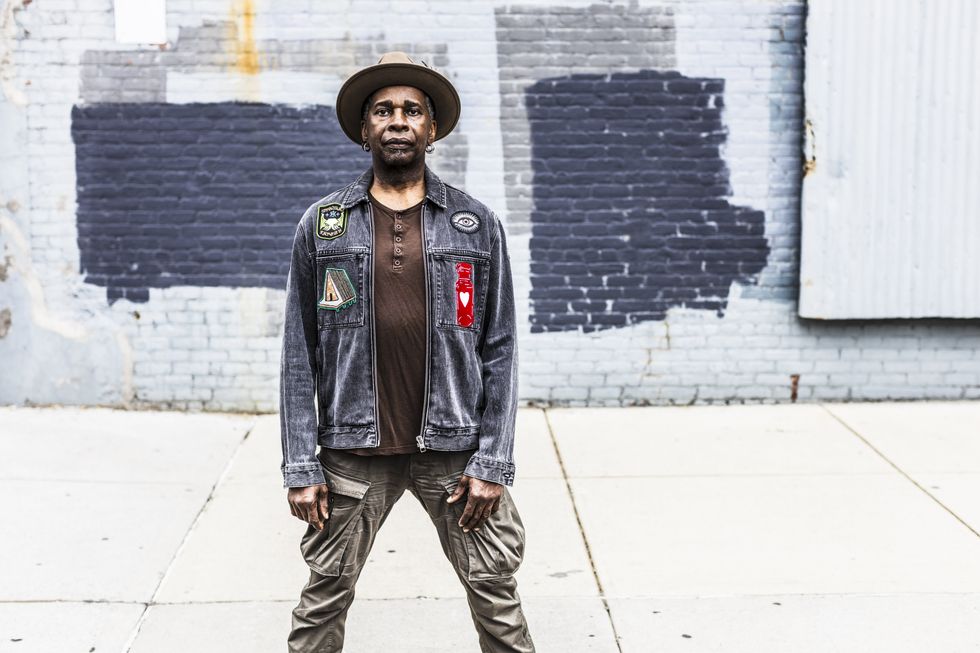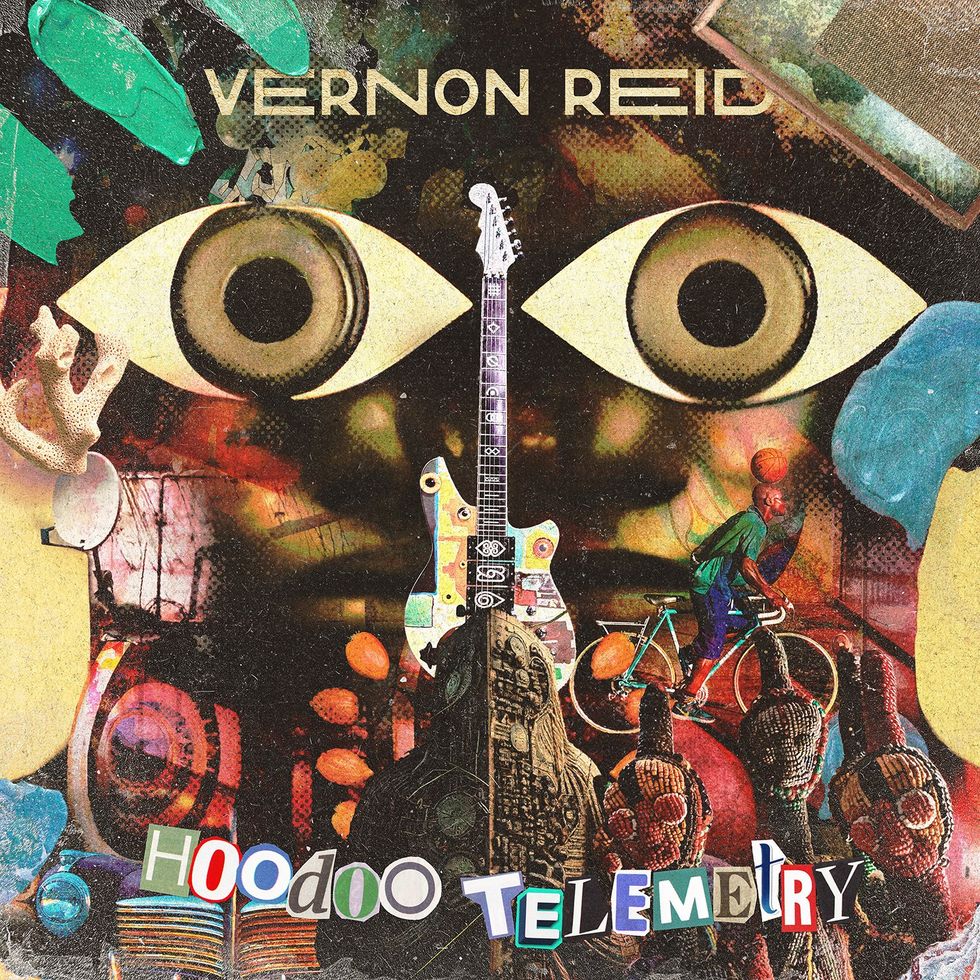English actress Glenda Jackson is credited with what’s now become an old performance-art adage: “Comedy is much harder to do than drama.” During my time living in New York City for the last eight-and-a-half years, I spent countless hours in open-mic basement dungeons—where small rodents would occasionally die and pungently decay beneath the floorboards and cellar stairwells—studying amateur standups workshop ideas in two- to seven-minute allotments of stage time.
I observed how each would coalesce their creative germs over the course of months—sometimes years—into solid, reliable bits while whittling down and sharpening their inner clown. And, after eventually trying it myself, with much floundering, I can personally attest that it’s a lot harder than it looks.
Twenty-five-year-old, North Carolina-born songwriter MJ Lenderman tells me that his song ideas “usually start with one line; something that makes me laugh.” Well, on his new album Manning Fireworks, his major-label debut with Anti- Records and fourth studio full-length of his solo career—which has grown alongside his work with the band Wednesday—I can definitely hear the laughter.
On “Wristwatch,” he proclaims that he has “a beach home up in Buffalo,” and “a wristwatch that’s a pocket knife and a megaphone.” On “Rip Torn,” presumably named after the actor by the same name, he sings, “I guess I’ll call you Rip Torn / The way you got tore up / Passed out in your Lucky Charms / Lucky doesn’t mean much,” and, “You said there’s men and then there’s movies / And there’s men in Men in Black / Said there’s milkshakes and there’s smoothies / You always lose me when you talk like that.” (To jog your memory of the ’90s, Rip Torn plays “Zed” in Men in Black.)
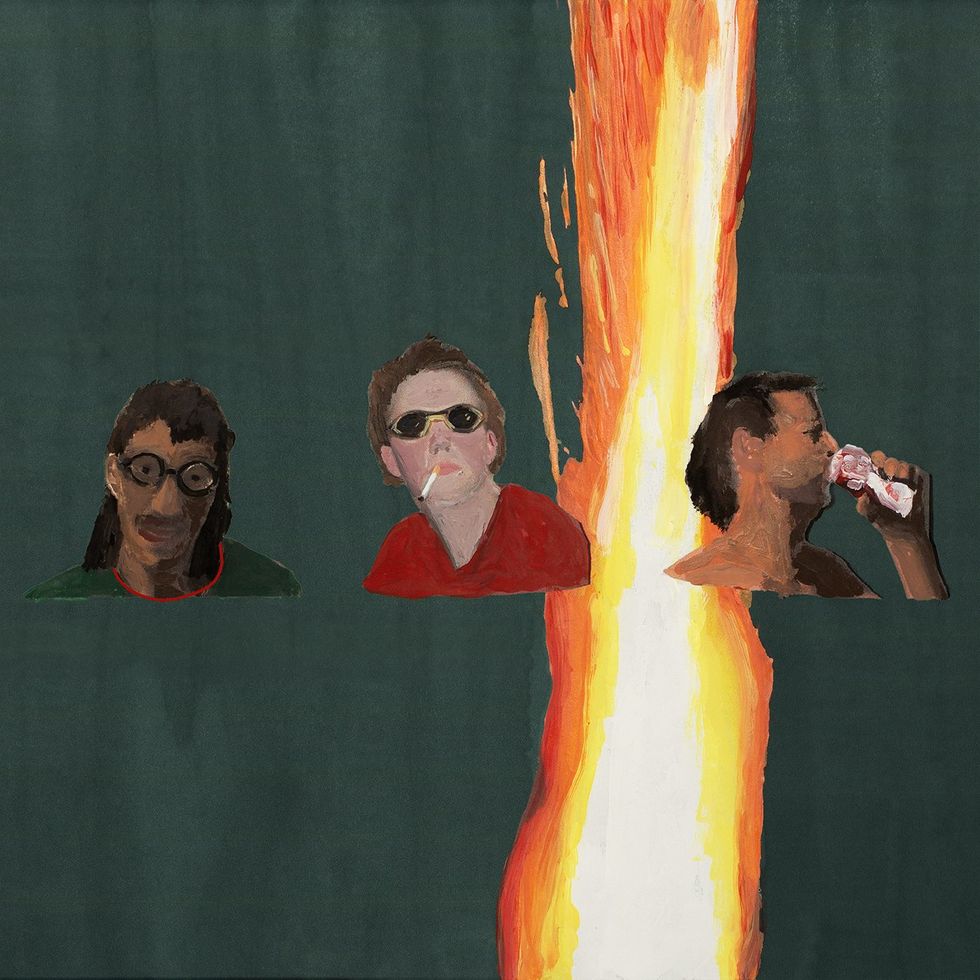
Manning Fireworks, Lenderman’s fourth studio full-length, was written and recorded between tours. The title comes from the idea of someone recklessly setting-off the recreational explosives.
Most of the folk-y, country-rock tracks on Manning Fireworks clock in at around three to three-and-a-half minutes, and take that time to unwind without demanding any patience. Lenderman’s main guitar is a 2008 Fender Jazzmaster, which he recently had modded with a Mastery Bridge, and he unassumingly twangs out each straight-ahead riff in a woozy, barebones essence all his own. I first heard the album in its entirety at a listening party at NYC’s Mercury Lounge, where the label folks from Anti- requested that the audience not go on their phones and not talk while the album was playing. I was among a full crowd of people in the 250-capacity room who followed those rules, and Lenderman’s self-actualized storytelling made it easy. As a songwriter, he draws influence from Neil Young, Jason Molina, Patterson Hood and Mike Cooley (Drive-By Truckers), and David Berman and Will Oldham (Silver Jews).
The album’s title conjures some unique imagery, I tell him—just the verb “manning,” which I associate with sailors (“Man the ship”), military (“Man the barricades”), or machines (“Man the cash register”). He says the visual for him is “somebody standing too close [to fireworks] who could set off a huge explosion if they’re not careful. I guess that’s kind of the way I was using them. I like the phrase because, on its own, it sounds like the name of a store you would see in South Carolina or something.”
I wonder if he remembers the drastic uptick of unusually loud fireworks being set off in NYC during the pandemic, a phenomenon reported on by Rolling Stone, The New Yorker, and The Atlantic. (Many speculated that these fireworks were being given out to unwitting kids as a systemic attempt to disrupt the sleep of those organizing Black Lives Matter protests at the time.)
“That’s not what I was writing about,” he laughs, adding, “but I think it was the same summer where somebody set off a firework in my friend Alan’s car and it totaled the car.”
MJ Lenderman's Gear
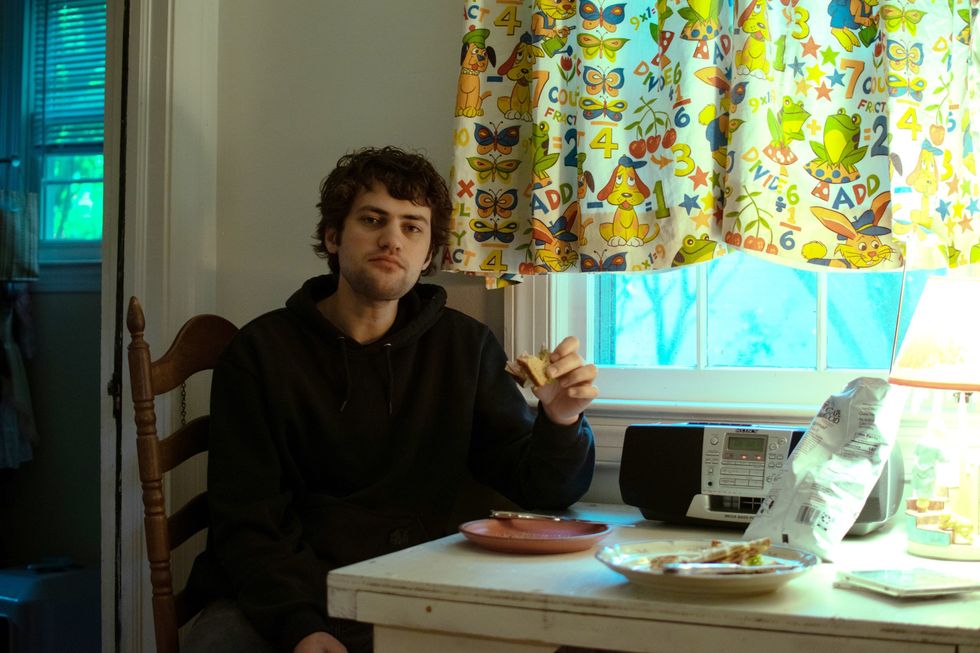
From the process of making Manning Fireworks, Lenderman took away the lesson that asking for help from his peers (in terms of contributing to his music), can make his life a bit easier.
Photo by Karly Hartzman
Guitars
- 2008 Fender Jazzmaster
- 1979 Gibson Firebrand SG
Effects
- Death By Audio Interstellar Overdriver
- Dunlop Cry Baby Wah
- Boss DD-7 Digital Delay
- Tuner
Amp
- Fender Blues Deluxe with Warehouse speaker
Strings
- Ernie Ball Beefy Slinky (.011–.054)
But his idea of what it means to “man” fireworks reminds me of a Mel Brooks quote: “If I cut my finger, that’s tragedy. Comedy is if you walk into an open sewer and die.” And, I can say that I’ve never heard a songwriter say that their song ideas begin with an inspiring one-liner, let alone a country-rock musician. That’s something that sets Lenderman apart on the creative plane, and offers a lot of information behind why his lyrics are so distinctive.
“Do you like comedy?” I ask.
“Yeah,” he replies, suddenly looking like he’s more interested in speaking on the subject than about his music. “[There are] some newer specials that I’ve been liking. I really am just impressed at the courage it must take to do that, and to fail at it over and over and over again.”
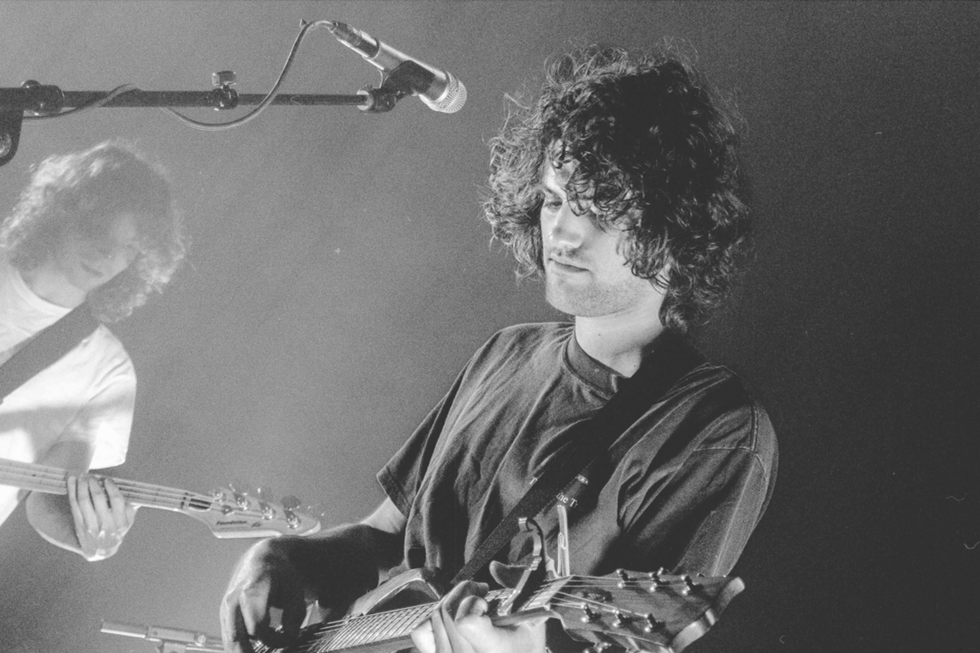
Lenderman’s second guitar is his Gibson Firebrand SG, which he says “feels a little more fragile” than his Jazzmaster.
Photo by Yailene Leyva
Lenderman says that he first fell in love with guitar at the age of 8. He was entranced by Jimi Hendrix at the time, who was “all I listened to for a couple years. Then I got really into Derek Trucks, then slowly into more alternative stuff like J Mascis from Dinosaur Jr., Stephen Malkmus, and Thurston Moore and Lee Ranaldo from Sonic Youth. All that stuff’s been super informative to my guitar playing.”
Having seen Lenderman play at Mercury Lounge—he performed a few songs live after we listened to the Manning Fireworks album stream—I can say there’s an intriguing, deceptive reductiveness to his playing. He fingerpicks, but in a seemingly self-taught style; the riffs are simple; but his publicist boasts to me after the show that he can shred, too. He can, and you can hear that more on his heavier, rockier live album, And the Wind (Live and Loose!), released in November 2023.
He’s never been that into gear, and still has stock pickups on his Jazzmaster, but recently had the tech from the band Drop of Sun (members of which facilitated the recording of Manning Fireworks) modify his amps. Aside from that, his spare pedalboard contains a Death By Audio Interstellar Overdriver, a Cry Baby Wah, a Boss DD-7 Digital Delay, and a tuner.
Lenderman’s 13-year-old self was mostly into rap, and while that young teenager might be impressed by how far he’s come today with his music, he says he probably would be confused by the songs.
“How would you describe your music to someone who hasn’t heard it?” I ask.
“I usually just say rock,” he says, laughing, “or country rock.”
“But … if you had to write what makes you different, and the answer will either get you into Heaven or Hell, what would you say to avoid going to Hell?”
“Uhm, I guess.... I don’t know, I would tell whoever to listen to it and maybe go to Hell.”
YouTube It
Performing a song off his 2023 record, And the Wind (Live and Loose!), MJ Lenderman takes the stage at SXSW with his trademark, modest delivery and twanging black Jazzmaster.
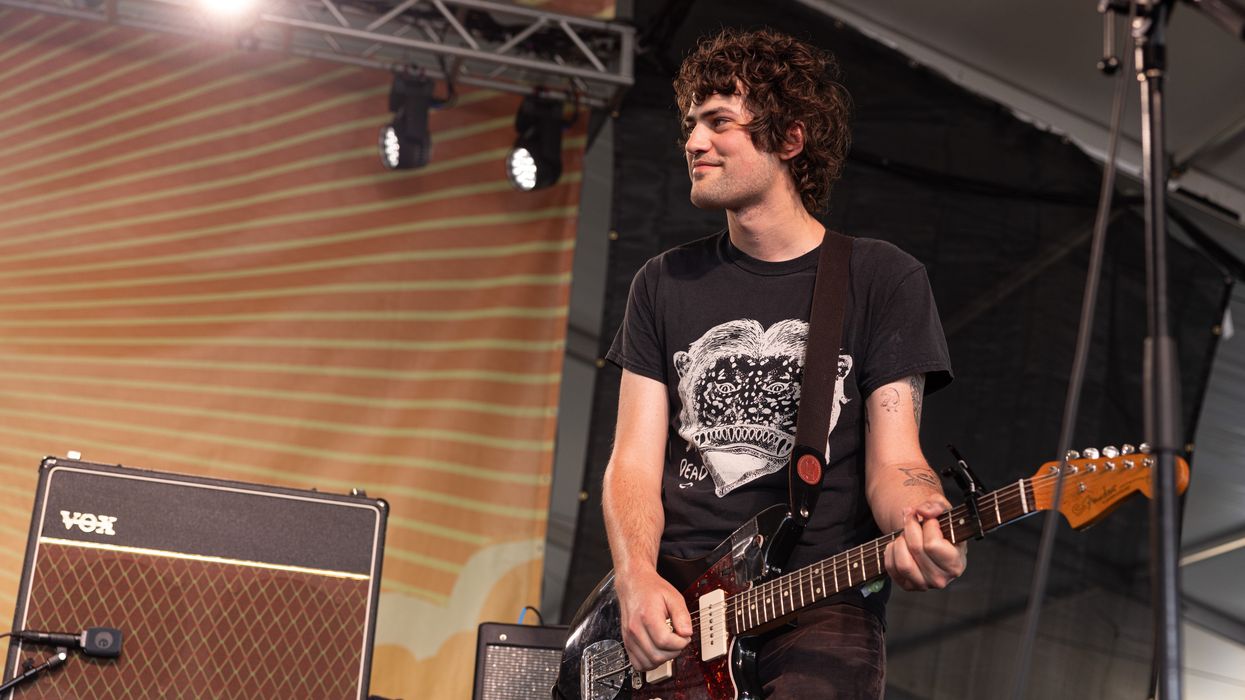






![Rig Rundown: AFI [2025]](https://www.premierguitar.com/media-library/youtube.jpg?id=62064741&width=1245&height=700&quality=70&coordinates=0%2C0%2C0%2C0)





![Devon Eisenbarger [Katy Perry] Rig Rundown](https://www.premierguitar.com/media-library/youtube.jpg?id=61774583&width=1245&height=700&quality=70&coordinates=0%2C0%2C0%2C0)















